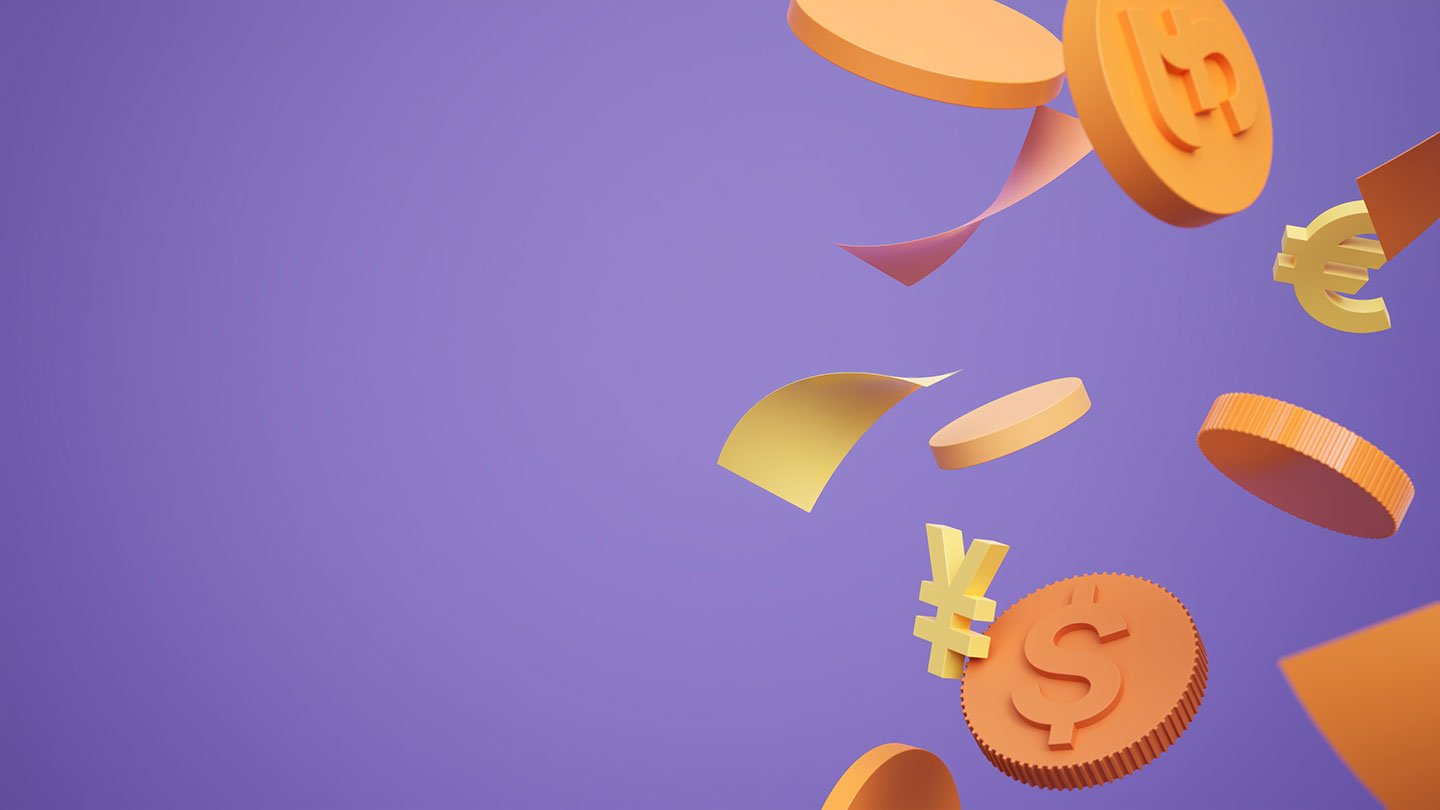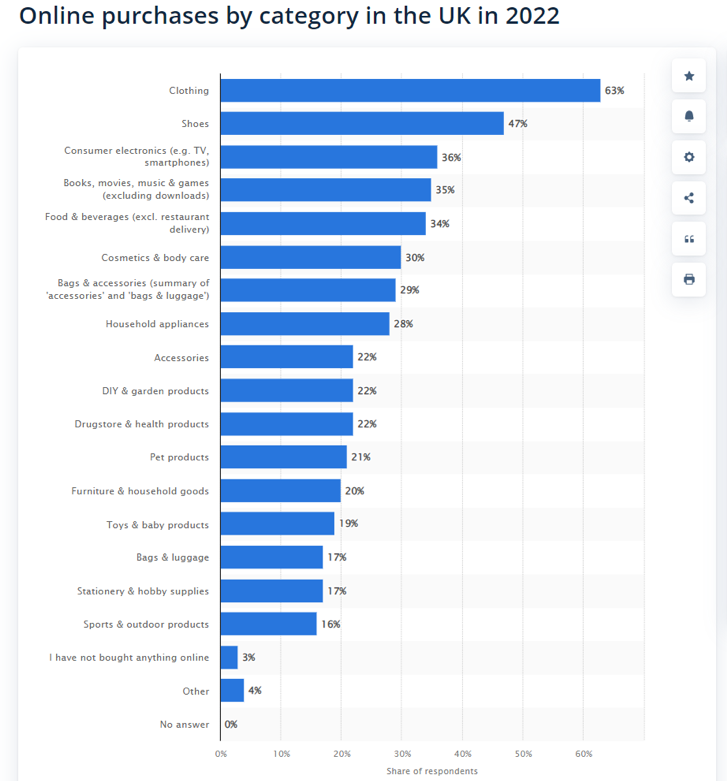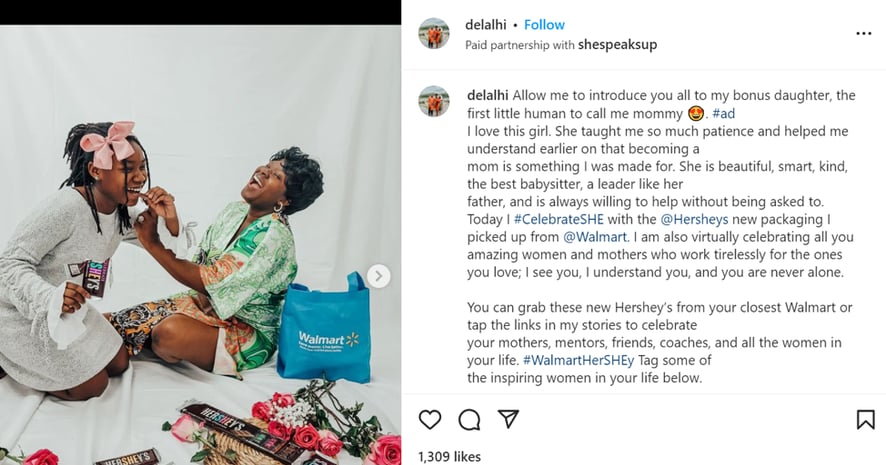Ecommerce
What is the digital shelf? How does it impact your eCommerce business?
Mastering the digital shelf is the key to success in eCommerce. It influences how your customers per...

Jan 23, 2023
5 min read
The pandemic changed the way people shop, driving consumers online for just about everything including groceries. This shift in behavior will continue into 2023.
Food & beverages, cosmetics & body care, and drugstore & health remain among the top products purchased online by UK consumers last year.

Understanding how trends in eCommerce impact CPG categories sets the stage for identifying what upskilling opportunities and technology you’ll need to focus on in the coming year.
UK economists are predicting a "miserable" year for households due to rising unemployment, income stagnation, and an inflation rate lingering at 10.7%. This will obviously impact shopping behavior and sentiment throughout the year.
In the context of eCommerce, trust is inextricably connected to privacy. While most consumers are willing to share some personal information in exchange for perks like custom offers and deals, it's important to be transparent—and careful—when using customer data.
69% of UK respondents in a Capterra survey said they consider a company's data privacy practices when determining whether they want to buy from them.
Misusing data is a big red flag when it comes to trust. Protect consumer data, be clear about how you plan to use it, and make it easy for people to retract/delete it.
One final trend to watch: consumers value common decency (don't we all?) More than half of UK consumers want retailers to pay staff fairly, contribute to their communities, and demonstrate a concern for the environment. Prioritizing sustainable and ethical business practices is particularly important for young consumers.
Omnichannel is a fancy way of saying "multiple channels." In the context of shopping, it means consumers use a mix of online and offline touchpoints like physical stores and shopping apps to make a purchase.
According to Klarna, a popular payment app, UK shoppers are keen to integrate new technologies into their shopping journey, but they also expect the journey to be seamless.
Even if you don't sell directly to consumers, it's important to understand how your retail partners integrate and deploy new technologies, channels, and strategies since poor experiences at the retail level could reflect poorly on your brand.
Data makes it possible to create great customer experiences, both online and off. Technology that facilitates data integration, unification, management, and analysis is, therefore, critical for digital marketing and eCommerce success.
Data-driven marketing uses "big data" to gain insights about customers and inform marketing strategy. The approach relies on more than just the data itself. You also need tools to organize, unify, and analyze data in real time.
Having access to high quality data is the only way to effectively understand product performance across stores, channels, and regions.
Nearly 90% of shoppers use social media when making a purchase decision. Social selling leverages the platforms like TikTok and Instagram to promote and sell products either directly or by partnering with influencers.
Having a presence on social media allows you to control messaging and engage with customers. You can also use hashtags to highlight products, events, and promotions.
Hersheys used the hashtag #CelebrateSHE to promote and elevate their campaign celebrating women and girls during Women’s History Month last year.

Social media fosters connection and authenticity. Having a presence on social platforms makes you available to customers as they seek information and connection across their shopping journey.
Virtual reality, a.k.a., "the metaverse" allows shoppers to interact with brands and products in innovative ways through wearables, smartphones, and platforms like Roblox and Decentraland. Brands can promote real items—or the brand itself—in these digital spaces in placements called "brand activations."
McCain Foods used Roblox to announce the launch of their new product, Regen Fries, and educate consumers about the unique sustainability features of the product. Regen Fries uses potatoes grown via sustainable "regenerative" farming methods.
McCain created a free game where players could virtually grow potatoes and earn rewards when they apply regenerative techniques to their crop.
About 60% of UK shoppers are already familiar with the metaverse, though it's more popular with younger shoppers. While this trend made our list for 2023, it's still largely aspirational. We think it will become a mainstream channel within the next 15 years.
User generated content (UGC) is created by consumers for consumers. Many retailers in Europe, primarily in fashion and household goods, are already embracing this trend.
The presence of UGC in eCommerce marketing campaigns has tripled over the past 10 years since. It reliably increases conversion rates and is a trusted source of product information for Gen Z and Millennial shoppers.
Personalization is a defining characteristic of a modern customer-centric strategy. Retail organizations that invest in technologies that personalize the buying journey across all touchpoints—online and off—get high grades with customers.
Personalization is so important to UK shoppers that 86% of them will provide personal information like email, gender, clothing size, and age in exchange for a better shopping experience.
Successful personalization increases brand loyalty, motivates repeat purchases, and improves customer retention (54% of consumers say they'll ditch a brand after a single bad shopping experience).
There’s been a 300% growth of subscription-based eCommerce companies over the past 7 years. Companies like Chewy and MightyNest offer easy replenishment of pet food & supplies, household cleaning products, and personal care items.
There are several approaches to subscription models, but for CPG companies, the replenishment approach, where everyday items are delivered in specified intervals (e.g., weekly, monthly, etc.) makes the most sense.
An example is Heinz to Home, a direct-to-consumer website where UK consumers can order product bundles directly from Heinz for one-time or repeat delivery.
Sales from mobile commerce, or m-commerce, are expected to surpass $100 billion GBP by 2024. As with most eCommerce trends, young shoppers are leading the way.
The success of mobile shopping is directly connected to the convenience of mobile wallets like Apple Pay and Google Pay, which make it easier for shoppers to make secure payments from their phone.
You probably already know that it’s important to have a mobile-friendly website. But you need to think beyond your website. That means integrating mobile touchpoints and technology into a connected shopping experience.
Mobile apps linked to loyalty programs that allow shoppers to download coupons and use points while shopping in stores and online is one example of how to achieve this.
Voice commerce - when shoppers research products and make purchases by talking to a virtual assistant or smart speaker – is our final trend. In a recent Statista survey of UK consumers, 46% of respondents reported using a voice assistant to shop.
Digital assistants and speakers allow shoppers to order products and ask questions without opening a website or app, though many devices require shoppers to have an account with the retailer.
To leverage voice search, ensure that the content on your website is optimized for voice assistants by adding structured data markup to product and category pages. This helps virtual assistants provide better, more accurate answers when customers ask questions about product ingredients, availability, and more.
eCommerce trends like omnichannel shopping, personalization, and social commerce impact all product categories across the CPG landscape.
As we head into 2023, consumers are worried about inflation. They want to maximize the value of every purchase. This, along with a need for trust and sustainability from brands, will drive their shopping behavior.
Adopting new technologies and embracing emerging trends helps you meet consumers wherever they are in their buying journey. It takes a top-down approach, with key buy-in from C-suite executives, an ongoing commitment to upskilling, and the right tools to successfully drive change.
For our recommended reading around eCommerce digital trends, check out the following courses:
Mastering the digital shelf is the key to success in eCommerce. It influences how your customers per...
Many brands now operate on both the digital and physical shelf, but that omnipresence makes it chall...
It’s hard to remember a time where we didn’t watch TV on demand, stream music, connect with friends ...
Get in touch and we can start helping with your digital learning journey.